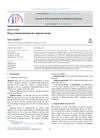Noncancerous Skin Diseases: Overview and Treatments
October 2016
in “
Elsevier eBooks
”

TLDR Common noncancerous skin diseases have various treatments, including topical applications, light therapy, surgery, and medications, with psychological support being important.
The 2017 article provides an overview of various noncancerous skin diseases and their treatments. Acne vulgaris, affecting 85% of adolescents, is treated with topical applications and sometimes surgery for scarring. Psoriasis, an autoimmune disease affecting up to 4.8% of the population, is managed with emollients and glucocorticoids. Eczema, prevalent in 8-25% of people, is treated with corticosteroids and UV light therapy. Keloids are treated with excision and corticosteroids, while rosacea is managed with topical antibiotics. Alopecia areata, an autoimmune hair loss condition, can be treated with topical steroids and immunomodulators. Vitiligo, affecting up to 4% of some populations, is treated with topical applications and light therapy. Warts, caused by HPV, are treated with debridement and cryotherapy. Urticaria is managed with antihistamines and corticosteroids, and pediculosis, or head lice, is common in children and treated with topical insecticides and oral therapies. The article also discusses head lice infestations, treated with nit combs and medications, and Hansen's disease (leprosy), treated with a multi-drug regimen. The psychological impact of skin conditions is highlighted, emphasizing the need for comprehensive treatment that includes psychological support.






